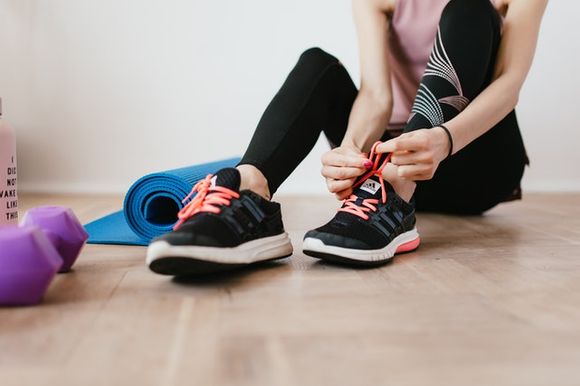Author: Silvia Marinova, PhD student in the Genomic Stability Laboratory at BAS
The article was approved by physiotherapist Georgi Peshev. The material aims to raise awareness and does not recommend self-medication.
In the previous part of the topic, we looked at how immobilization, as part of modern daily life, can lead to bone-joint functional changes and muscle imbalance. We explained what they are due to, namely the weakening of certain muscle groups at the expense of shortening and overworking others. The greatest attention was paid to forward head posture - one of the three most common problems associated with the wrong posture.
In this text we will also get acquainted with the other two - rounded shoulders and enlarged front inclination of the pelvis.
Rounded shoulders forward

Deviations from the neutral position of the body are most often due to the action of gravity. Gravity is a constant natural phenomenon, and in order to maintain an upright and correct posture of the body, our muscles are forced to constantly resist it.
Too often, however, gravity prevails because our muscles are not sufficiently prepared and trained. This is also reinforced by the fact that many of our daily activities are related to hunching back and down - for example, when looking at our phone or tablet.
Usually it is the insufficient endurance of the muscles in the upper back that the phenomena rounded forward shoulders and an increase in thoracic kyphosis are due.
Medically speaking [ref.1] rounded shoulders are characterized by a deviation from the neutral position of the body, with displacement of the blades forward and their protraction. One way for the attending physician to determine this is for her to assess our upright posture when we are not tense. Often rounded shoulders make us look stooped forward.
Rotation of the arms is also observed. When they are relaxed, the thumbs are expected to point forward if our posture is neutral. If we have rounded shoulders forward, however, then the thumbs point towards each other.
In terms of muscle imbalances in rounded shoulders forward, the following is observed:
- Overworking/shortening - some muscle groups shorten and become overloaded, pulling the body in this hunched position forward. These are the upper trapezius muscle and the pectoral muscle. In addition, there's general lack of mobility in the chest area.
- Underworking - the other factor associated with rounded shoulders forward are the elongated muscles with reduced tone and strength. These muscle groups are weaker and fail to pull the shoulders back to a neutral position. Most often here we are talking about the lower and middle trapezoid, as well as the serratus anterior muscle. It is a large flat muscle which covers the lateral part of the chest.
Studies in the field suggest [ref.2] that not only immobilization and sedentary lifestyle can lead to rounded shoulders. Improper and uneven workouts are also a serious prerequisite.
When our workouts are not balanced, very often we achieve the same result of excessive exertion and shortening of certain muscle groups at the expense of the weakening of others. This makes us more susceptible to shoulder girdle injuries. Therefore, it is important to build our workouts in an informed way, and aim for balance.
The next section is dedicated to exercises for the most commonly affected muscle groups in cases of rounded shoulders.
What exercises should we practice

The program of exercises to perform should include two groups of them. The first is exercises for stretching the abovementioned muscles:
- Stretching with a foam roller/chair - we can stretch the aforementioned muscle groups, even sitting in a chair, simply by moving the upper back backwards and down from the backrest so that we feel tension. This exercise also improves the overall mobility of the upper back. An even better alternative is to perform the corresponding stretching with the help of a foam roller, on which to lie down. We should be careful not to compensate for the movement with excessive curve int he waist.
- Stretching with an elastic band - we grab an elastic band (alternatively we can use a towel or stick) at the level of the shoulders with the palms pointing down. We gently stretch the elastic to the side, forming tension. From here we put our hands above the head and twist them back, holding the elastic band at the same time.
As you can guess, the second group of exercises is associated with an intensification of medium and lower trapezoidal and the serratus anterior muscle:
- Strengthening the serratus anterior muscle - it is very appropriate to make a special variation of plank. Hands are completely stretched as the wrists are rotated 90 degrees outwards [ref.3]. When we are ready with the right position, we begin to push the upper back to the ceiling.
- Strengthen the middle and lower trapezoid - we can again do variations of exercises with an elastic band. For example, we grab the elastic with straight hands at the height of the shoulders with the thumbs pointing upwards. We stretch slightly to the side to create tension and raise our hands above the head.
Besides the individual exercise program, it is very important to increase our attention to the right posture and adjust every time we feel that we have moved forward.
Abnormal anterior tilt of the pelvis

With this deformation, the pelvis is tilted forward, which leads to an increase inthe lower back ligament. This creates tension in the waist and often leads to pain. Here again we will pay special attention to the musculature:
- Overworking/shortening - usually overworked are the muscles flexors of the hip joint, erector spinae, multifidus, etc.
- Underworking - these muscles are more familiar and easy to explain. These are abdominal and gluteus muscles. Very often they become less toned.
Risk factors for increasing the anterior tilt of the pelvis are not only immobilization and sedentary lifestyle, but also, for example, the flat foot. It leads to an incorrect position of the legs, and hence inadequate muscle workload. This is just another illustration of how interconnected everything is in our body.
Therefore, this article should not be taken as completely exhaistive on the topic; it is definetely necessary to consult a doctor or kinesitherapist before starting a treatment.
What exercises to perform

The complex of exercises we can perform here is very diverse. Again, it should be aimed at balancing muscle groups that are affected. Some sample exercises are:
- Stretching the hip flexors - assume postion in which the back knee is on the floor and the front leg is folded, forming a 90-degree angle. The exercise is to move the pelvis forward by tightening the buttock and abdominal muscles.
- Tightening of the gluteus and abdominal muscles - it is especially important to choose such exercises in which we do not experience pain. An example of a very suitable exercise that is easy to perform is a variation of a bridge. It is performed from a supine position, legs folded at the knees and hands on both sides of the body. The pelvis stands up to form a straight line with the upper back by pressing from the heels. Return to the starting position.
The described set of exercises is not suitable for every problem, as there are many more types of bone-joint deformations. In conclusion, we will reiterate that in case of back pain it is not a good idea to postpone the consultation with a specialist just because "everyone hurts their back". This will help us to deal more quickly and effectively with the problem that has arisen. And in order not to go so far, it is good to realize earlier the need to pay attention to the correct posture, knowing what changes are due to immobilization and the modern way of life in general.








